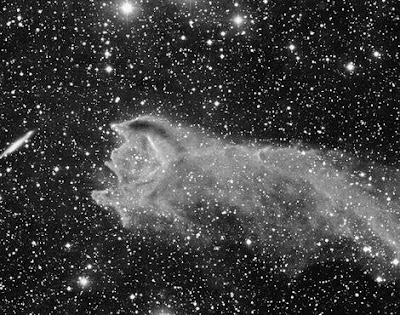“With a normal photograph, you look at the scene you want to record, check your light meter (or more typically, let the camera do it), then press the shutter release. With these pictures, David Malin says, the process is back to front. You point the camera at something that can’t be seen with the human eye. You press the shutter, allow for exposures of up to three hours, then see what emerges from the glass negatives.
“You’re aware that what you are collecting on the glass plate has travelled halfway round the universe,” he says.
“At the observatory near Coonabarabran, Malin could turn from the photographic plate and see the canopy of stars the telescope was about to reveal. “That’s a lovely feeling. Nowadays, with digital technology, you can do the same thing in an office looking at a monitor. That’s more efficient but not as romantic.”
In black and white: the viewfinder’s guide to the galaxy, Sydney Morning Herald

